iCeMS, NIH-CRM Directors Meet in Bethesda, Looking Beyond the MoU

March 19, 2012
Coinciding with unseasonably warm weather, a Kyoto University delegation led by iCeMS Director Norio Nakatsuji paid a visit to the U.S. National Institutes of Health's Bethesda campus on March 13 to meet with Dr. ![]() Mahendra Rao, Director of
Mahendra Rao, Director of ![]() its new Center for Regenerative Medicine (NIH-CRM), and an exceptional array of NIH investigators.
its new Center for Regenerative Medicine (NIH-CRM), and an exceptional array of NIH investigators.
The series of meetings was aimed primarily at identifying promising directions for collaboration in stem cell research and its medical applications. This partnership officially began in November 2011, when the iCeMS and the NIH-CRM signed a Memorandum of Understanding (MoU).
"The iCeMS has the expertise [in multidisciplinary stem cell research] to move forward to its translation," said Dr. Rao in an interview conducted during this visit. "We want to draw on all the expertise from leading centers [in the field] to move forward in a coordinated way. This MoU tries to make sure that the processes are in place to make that happen."
Dr. Rao also stressed the need of overcoming roadblocks to regenerative medicine, such as an absence of mature regulatory policy and uniform activities across nations: "Stem cell work is going to be done in many different countries with different rules for the cells. And because of ethnic backgrounds and genetic diversity, cells that will be used are also different. We want to be able to coordinate all of the activities so every time you don't have to do a lot of extra work and duplicate things. So NIH decided to reach out to leaders [in the field] in different countries, and ask what would be the best way for such coordination."
As early examples of the center's efforts in the direction, Dr. Rao cited its newly formed alliances with the iCeMS, the California Institute for Regenerative Medicine (CIRM), and India's Department of Biotechnology in ![]() a recent Regenerative Medicine editorial (7, 129-131; 2012).
a recent Regenerative Medicine editorial (7, 129-131; 2012).
Another primary item on the agenda was to explore the possibility of involving Kyoto University's ![]() Institute for Frontier Medical Sciences (IFMS) in these joint endeavors, with a stronger emphasis placed on translational research. Dr. Rao expressed interest in furthering discussion with the IFMS, in light of its leading role in Japan toward establishing clinical-grade human embryonic stem (ES) cell lines as well as expertise in quality control.
Institute for Frontier Medical Sciences (IFMS) in these joint endeavors, with a stronger emphasis placed on translational research. Dr. Rao expressed interest in furthering discussion with the IFMS, in light of its leading role in Japan toward establishing clinical-grade human embryonic stem (ES) cell lines as well as expertise in quality control.
Organized as a key and open component of the day, Dr. Nakatsuji delivered a talk entitled "Cell-material integration research at iCeMS for pluripotent stem cell science and technology," attracting an audience of about 70 from within and outside the NIH. The talk was followed by an animated Q&A session with the floor — and yet another set of questions from young researchers who approached the speaker on the floor.
"Model cells for neurodegenerative diseases like Alzheimer's, stem cell-derived cardiomyocytes for drug safety testing — it was nice to know there's a feasibility of drug discovery and clinical applications," said one of the young researchers, commenting on the lecture content. Another said: "We hope we can meet more people from those labs [presented in Dr. Nakatsuji's talk] some time again."
It had been a while since these directors — two old friends — last met. This reunion happened to take place in the run-up to the 2012 National Cherry Blossom Festival, which marks the centennial of the first planting of Japanese cherry trees in Washington, DC and honors the enduring friendship between the two nations.
by Yutaka Iijima
Photos
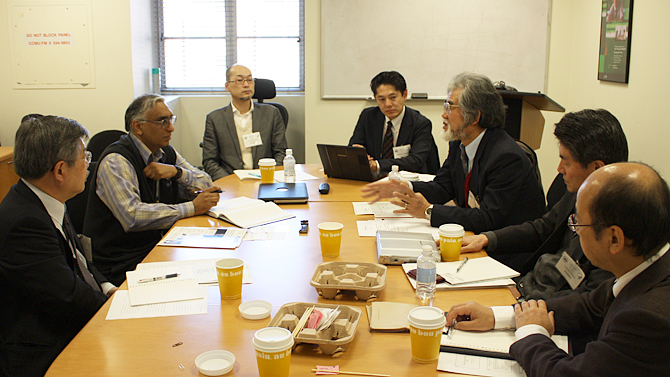
Drs. Rao (second from left) and Nakatsuji (third from right) engaging in a discussion
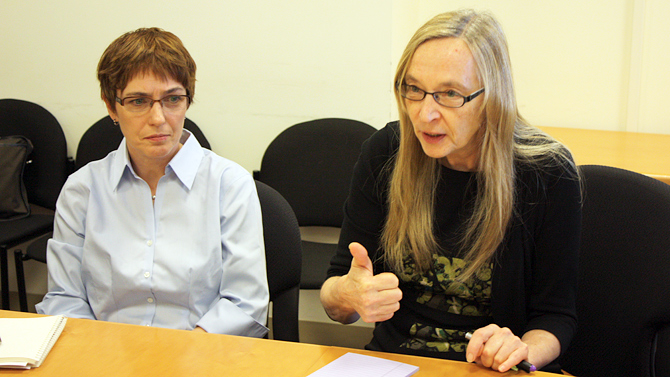
NIH Stem Cell Unit Technical Director Barbara Mallon (left) and Craniofacial and Skeletal Diseases Branch Chief Pamela Gehron Robey of the National Institute of Dental and Craniofacial Research (NIDCR)
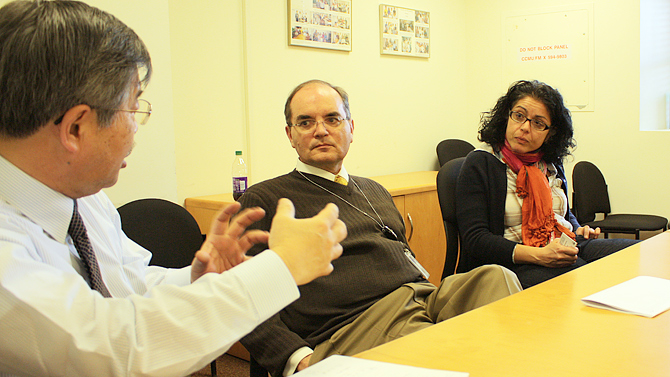
From left: IFMS Visiting Professor Tsuneo Takahashi, Cell Processing Section Chief David Stroncek, and the section's Research and Product Development Supervisor Marianna Sabatino of the NIH Clinical Center's Department of Transfusion Medicine.
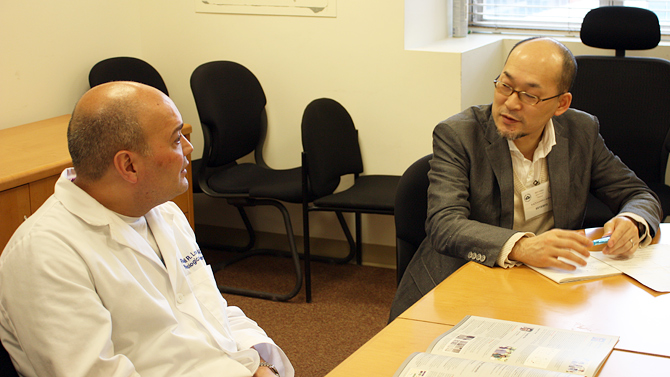
From left: NIH Senior Investigator Russell Lonser, Chief of the National Institute of Neurological Disorders and Stroke (NINDS) Surgical Neurology Branch and iCeMS Senior Lecturer Kazuhiro Aiba
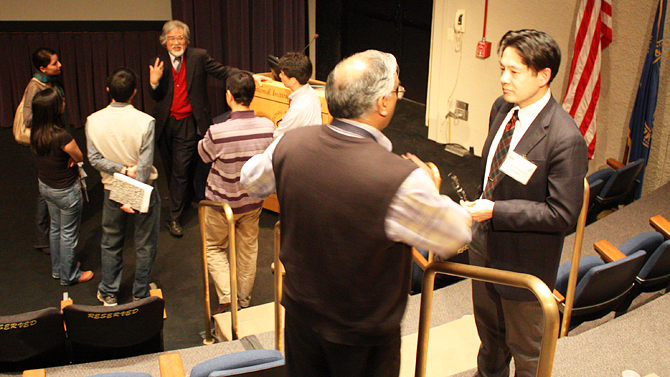
Discussions go on: Dr. Nakatsuji answering young researchers' questions (background left); Dr. Rao and iCeMS Associate Professor Shintaro Sengoku exchanging views (foreground right)
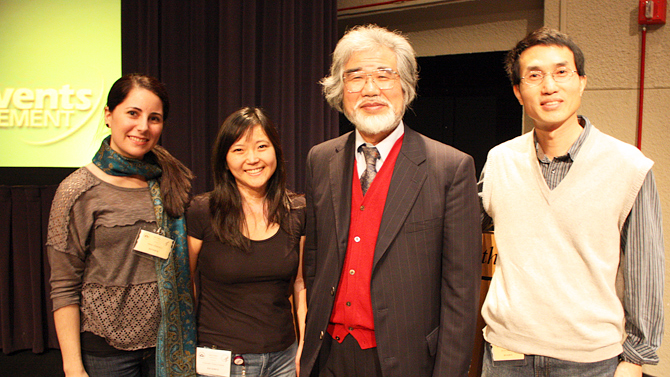
Researchers of tomorrow (from left): ATCC Cell Systems biologist Anna DiRienzo, scientist Yukari Tokuyama, and senior scientist Dezhong Yin photographed with Dr. Nakatsuji
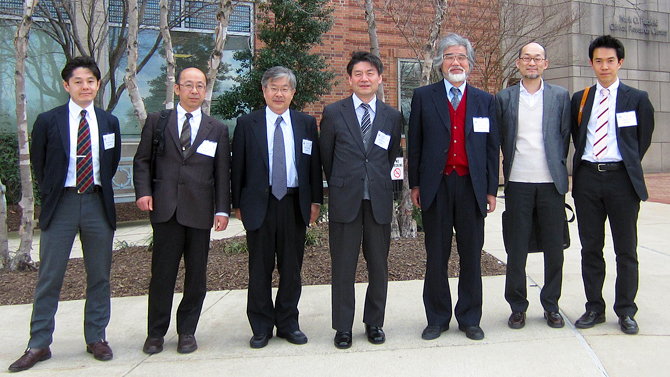
The delegation (from left): Dr. Sengoku, IFMS Associate Professor Hirofumi Suemori, Dr. Takahashi, iCeMS Professor Takashi Asada, Dr. Nakatsuji, Dr. Aiba, and iCeMS Public Relations Manager Yutaka Iijima
